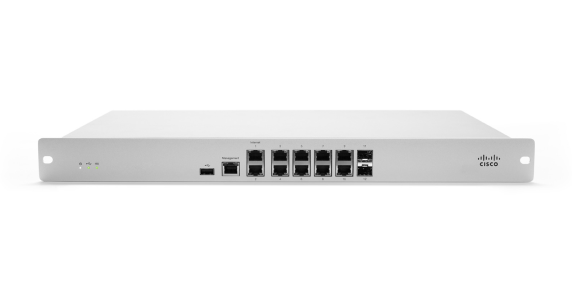
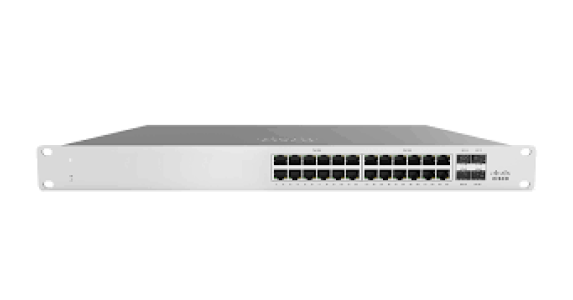
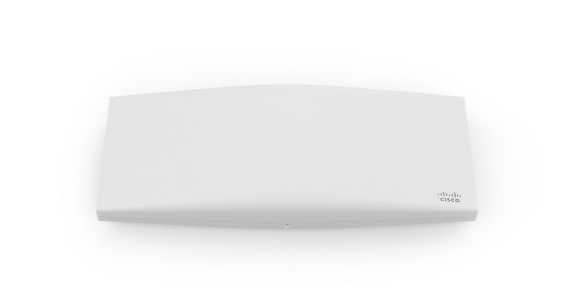

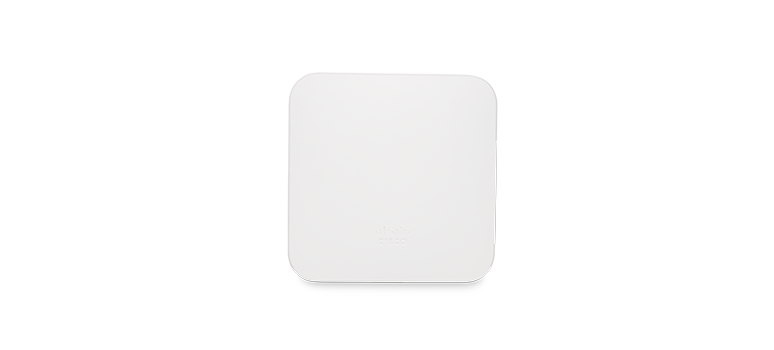
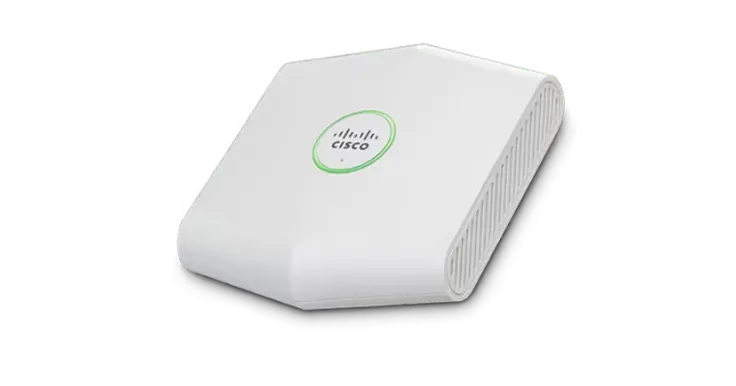
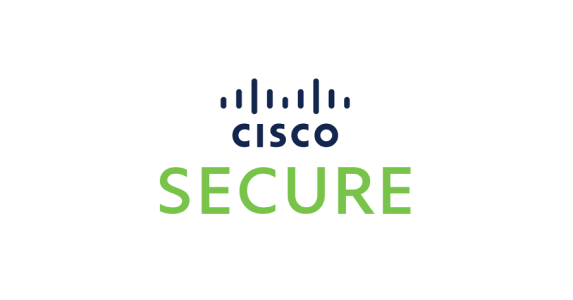
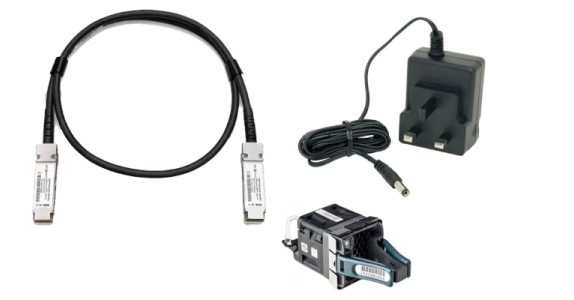
Meraki MT sensors give you real-time visibility into your physical environment without complex wiring, batteries, or third-party integrations. Designed to work natively with the Meraki platform, Cisco Meraki sensors monitor conditions like temperature, humidity, water leaks, air quality, and door access, all from a single cloud dashboard.
Setup takes minutes. Each sensor connects wirelessly to Meraki MR access points or MV cameras, then feeds data directly to the Meraki dashboard. You get alerts when thresholds are breached, trends that support preventative action, and APIs that integrate seamlessly with your building automation or security systems.
Whether you’re protecting server rooms from leaks, maintaining air quality in classrooms, or monitoring door activity in secure zones, Meraki MT sensors make it simple to act fast and stay ahead of facility issues. From the MT10 and MT11 temperature and humidity sensors to the MT14 and MT15 for air quality and CO₂ detection, each device is purpose-built, cost-effective, and centrally managed.
Stratus Information Systems can help you size, deploy, and configure your Cisco Meraki sensors for maximum value. Contact us if you need any help.
Meraki MT sensors are smart environmental monitoring devices that integrate directly into the Meraki cloud-managed ecosystem. These sensors monitor real-world conditions like temperature, humidity, water leaks, door access, and air quality. For example, the MT10 and MT11 track climate conditions, the MT12 detects water presence, and the MT20 monitors door status. The MT14 and MT15 offer deeper air quality insights, including VOCs and CO₂. There’s even the MT30, a programmable smart button used to trigger custom automations or workflows. All Cisco Meraki sensors deliver real-time data to the Meraki dashboard, where you can set thresholds, receive alerts, and view historical trends.
Meraki MT sensors use Bluetooth Low Energy (BLE) to communicate with Meraki MR access points or Meraki MV smart cameras. There’s no need for dedicated gateways or local servers. Once powered, each sensor securely pairs with a nearby Meraki device, which relays data to the Meraki cloud. This setup significantly reduces deployment complexity and cost. All data is encrypted and accessible from the Meraki dashboard. You can view sensor status, configure thresholds, and receive alerts—all from a single pane of glass. This plug-and-play architecture makes Cisco Meraki sensors especially attractive for multisite rollouts and distributed environments.
Both the Meraki MT10 and MT11 are temperature-monitoring sensors, but they are designed for slightly different use cases. The MT10 monitors both temperature and humidity in typical indoor settings such as office spaces, IT closets, or healthcare rooms. The MT11 is designed specifically for cold storage or high-precision environments. It supports external probes for more accurate and localized temperature readings, which makes it ideal for freezers, refrigerators, or other temperature-sensitive assets. Both sensors use BLE to connect to Meraki infrastructure and can be monitored and configured through the Meraki dashboard, like all Meraki MT sensors.
Cisco Meraki sensors work to alert you before minor issues become major problems. For example, a water leak detected by the MT12 could prevent server room damage, or a rise in CO₂ levels picked up by the MT15 could trigger ventilation actions before occupants feel discomfort. Similarly, a sudden door open event from the MT20 could notify security of potential breaches. Because all Meraki sensors are connected to the Meraki dashboard, admins receive real-time alerts, can monitor multiple sites remotely, and use historical data to spot patterns. The result is faster response and reduced operational risk.
Yes. Meraki MT sensors are well-suited for regulated industries like healthcare, pharmaceuticals, education, retail, and finance. For example, temperature monitoring with the MT11 helps ensure vaccine storage compliance, while water detection with the MT12 can protect critical equipment in banking or healthcare. Air quality sensors like the MT14 and MT15 support environmental standards in schools and shared office spaces. Each Cisco Meraki sensor offers centralized logging and auditability, which simplifies compliance documentation and reporting. Plus, role-based dashboard access ensures only authorized personnel can configure or review sensor data.
Meraki sensors support webhooks and API access, enabling integration with automation platforms or building management systems. For instance, you can connect the MT30 Smart Automation Button to trigger a workflow like contacting IT support, unlocking a door, or turning off HVAC. You can also link temperature or door sensors to third-party platforms for automatic responses. This capability allows Cisco Meraki sensors to move beyond monitoring and into active response, helping organizations reduce manual overhead. Stratus Information Systems can help build out these integrations and connect your sensor data to the rest of your stack.
Deployment is extremely fast. You simply mount the sensor, power it on, and it automatically finds a nearby Meraki access point or camera via BLE. Once paired, it begins reporting data to the Meraki dashboard. There’s no need for local controllers, software installs, or complex cabling. From there, administrators can view real-time data, configure alerts, set thresholds, and review historical metrics—all from a web-based interface. Like other Meraki products, Meraki MT sensors are designed for simplicity, scalability, and centralized control, making them ideal for both small businesses and large distributed enterprises.
The Meraki MT30 is a programmable smart button that gives end users a simple way to trigger custom actions. It’s fully configurable in the Meraki dashboard and can be used to open a support ticket, alert a facilities team, activate smart lighting, or integrate with third-party platforms like ServiceNow or IFTTT. Because the MT30 is cloud-managed, IT teams can deploy and update workflows centrally. The button is ideal for environments that need instant, physical control without extra training or hardware. It expands the scope of what Cisco Meraki sensors can do by enabling human-triggered automation events.
For advanced security threat protection, Meraki MX series firewalls are the most powerful options on the market. Your Meraki firewall becomes a Unified Threat Management (UTM) device deployed across multiple sites by leveraging Cisco’s industry-leading Talos system. Essentially, it allows you to construct a protective net over your entire organization.
For advanced security threat protection, Meraki MX series firewalls are the most powerful options on the market. Your Meraki firewall becomes a Unified Threat Management (UTM) device deployed across multiple sites by leveraging Cisco’s industry-leading Talos system. Essentially, it allows you to construct a protective net over your entire organization.

Stay informed about our newest releases and updates